Marking and Feedback Journey

I launched the DIRT Resources at midnight last night, to celebrate the first birthday of my site. It has been a 3 year process of trials and improvements to get to the stage I am at now where I feel comfortable to share and bring the maths community in to make something that will hopefully mean students everywhere will receive a high standard of feedback and reflective time. Alongside this if we as teachers work together to build this bank, it will reduce maths teachers workloads. I believe there are approximately 5000 maths teachers within the UK. If every teacher created one question each, the bank would have a significant array of options for teachers and students to choose from. I'm hoping the bank will eventually range from KS1 to KS5, Primary, Secondary and Further Education.
DIRT stands for either Dedicated or Directed Improvement Reflection Time.
The DIRT bank can be found here. To get involved and create a DIRT please use the template and email your DIRT to myself, see contact Miss B's resources. I'm aiming to update the DIRT Bank weekly. The DIRT questions now consist of both a guidance and support question, as well as an independent task for the students to complete. Allowing the students to show their initial progress on a topic. Here are a couple of examples.
However, to get to this point I have been on a journey, a long one. I originally blogged about my journey here. Over time I have tweaked and developed my marking and subsequently departments marking with all the best bits that seemingly have an impact. My journey looks something like this.
This year I took the whole cycle, listened to student voice and have made the students books into chaptered revisions guides. At the start of a topic a student gains a marking token which describes the journey that will take place in the unit this year for the students. We aim to secure the topics below and master the current topics, continually incorporating breadth and depth. Life without levels means this resources has become even more valuable as it helps the students to understand what skills they need to know next. The students throughout the topic annotate this and rank themselves 1-3 on each objective linking in with the RAG123 that we complete. Below you can see how the objective statements have evolved over time into the sequential journey they are today, after listening from feedback from students and teachers.
Following marking and feedback within a topic looks as follows.
Throughout a topic all work is self or peer marked in green pen. Including feedback given. If I am supporting a student I will write in red, while the student writes in green. Is this for Ofsted? The blunt answer is no. This is to help the students identify their own personal misconceptions. With comments from students being "I love the green pen! It helps me spot the little things I keep forgetting like my units miss." and "The green pen has made my book mine, it shows me all the positives and what I need to work on quickly when I revise.". There are many more comments like this being heard from the students. One student enthusiastically explained the full cycle to her parents at parents evening explaining why it had helped her so much. (I didn't bribe her either!).
Some examples of the green pen in use are here, maybe they aren't the best examples, but unfortunately I only have 5 books at home which I didn't manage to get done at school.
 |  |  |  |
Following this as a faculty within a unit staff and students use Kev Lister's RAG123 each lesson. Staff aren't expected to do anymore than validate a students self or peer RAG123 by highlighting it, or RAG123 the work themselves. This has had a noticeable impact in all classes, with students effort levels and presentation continually improving. It is helping our students become mathematically fluent. Every week I look at all the students in each of my classes who got greens for effort all week and send a postcard home to one student from each class. Students love this positive interaction, this year I tasked myself to make sure I focus on all the amazing positives of my students and this was one of the way's I have done this.
At the end of a topic each student completes a 10-20 minutes mini assessment, which the teacher then exam marks. These assessments link to the key skills we believe students need to know from the unit. We then take 1-3 skills for each topic and say whether a student in below, securing or mastered the skill using doddle software, however we have written the majority of our own statements alongside those created by Pixel.
From this a teacher then highlights a 1-2 DIRT questions for the student to complete or a challenge question in the DIRT booklet as well as highlighting up to five spelling mistakes the student may make. Examples of this can be seen below. It is important a student completes both the support and the independent tasks for each highlighted question.
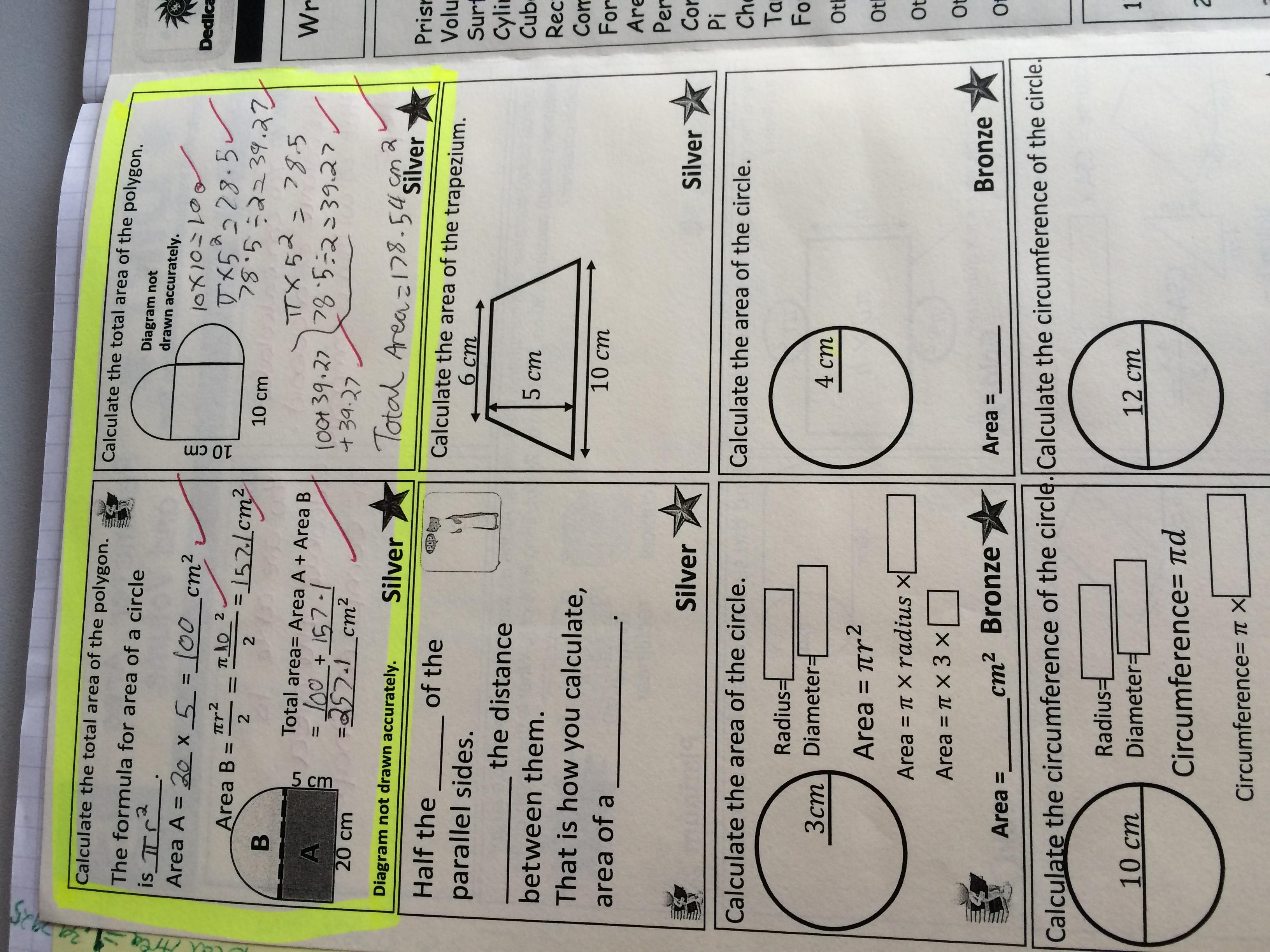 | 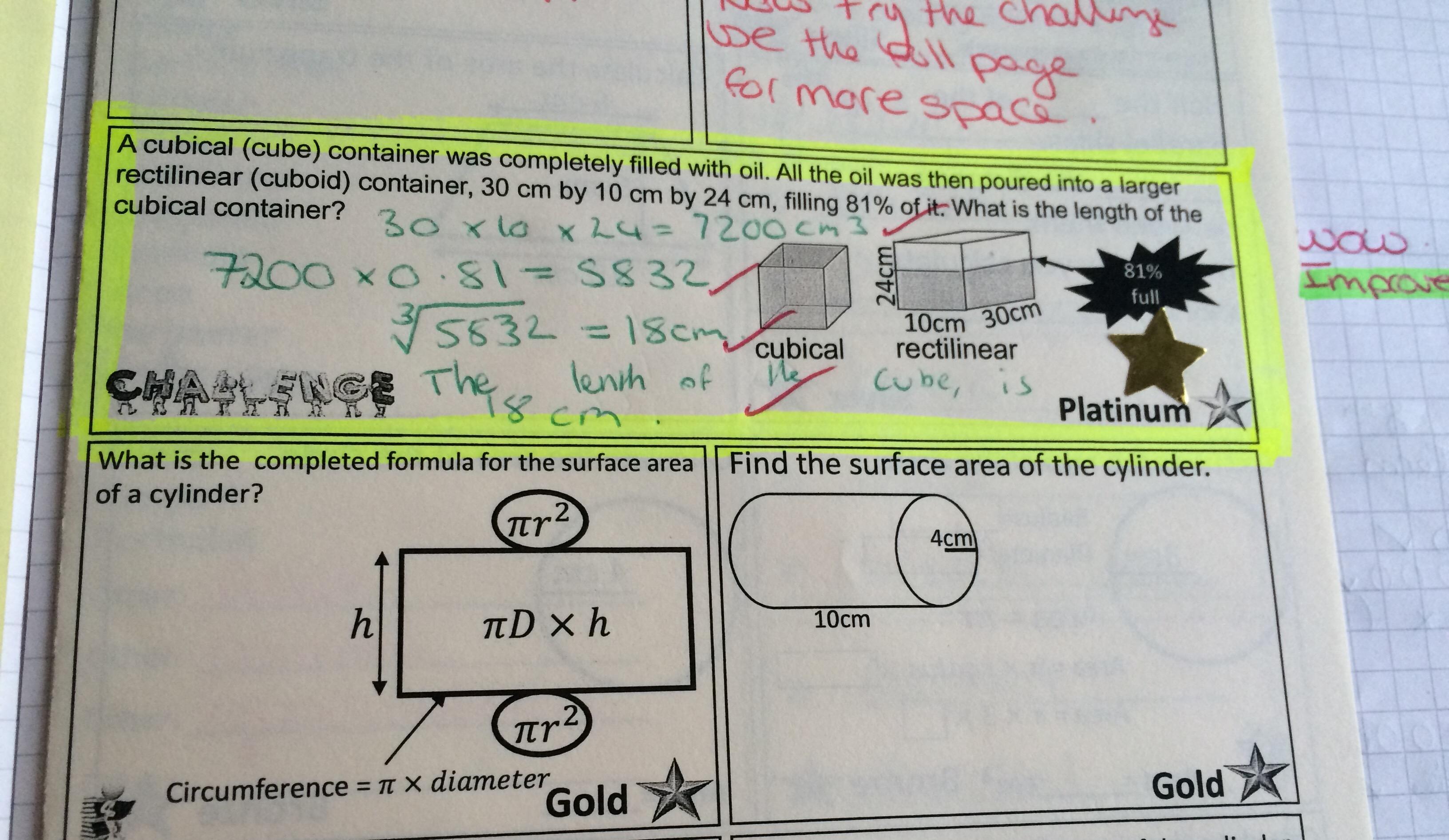 | 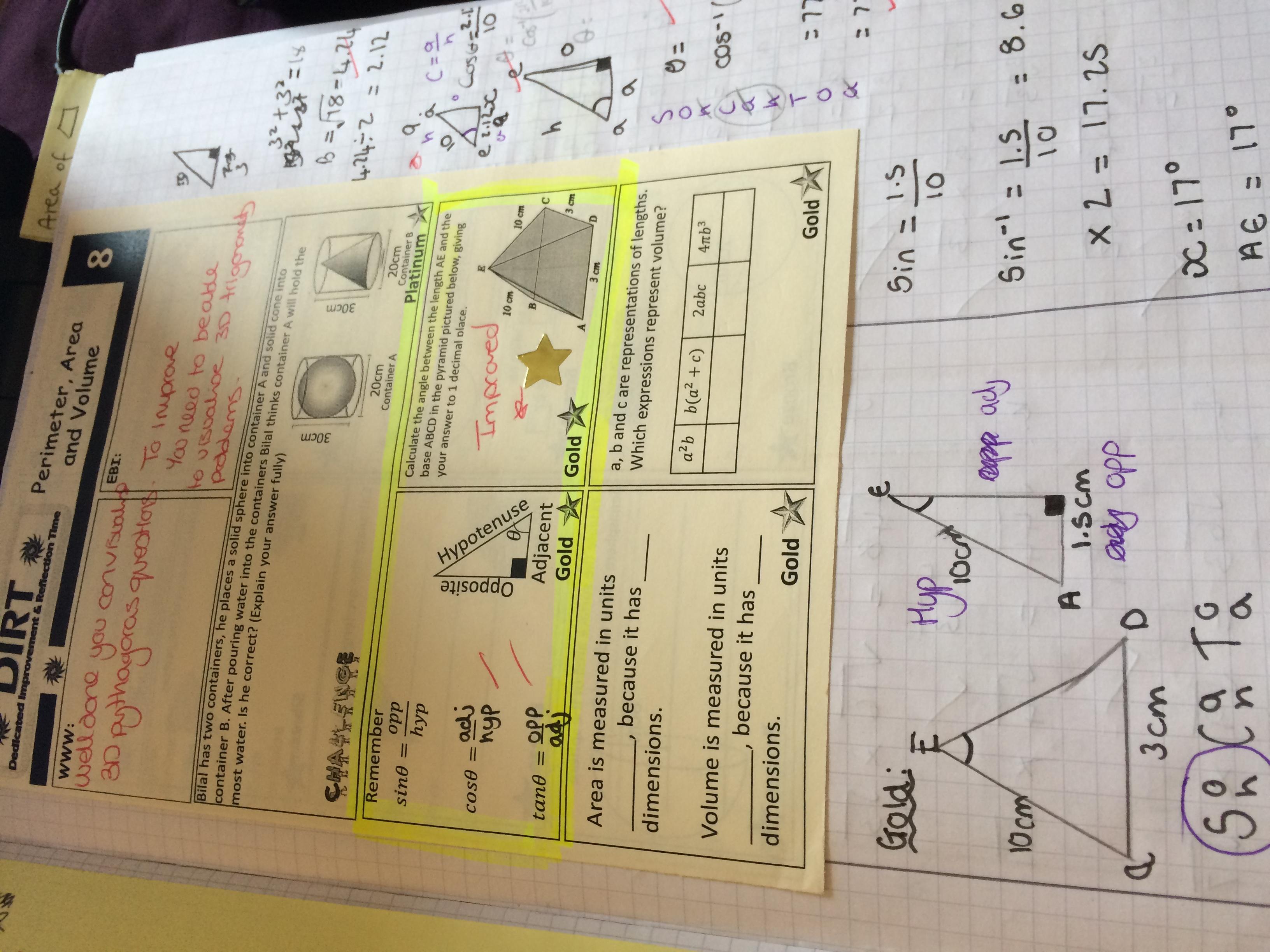 | 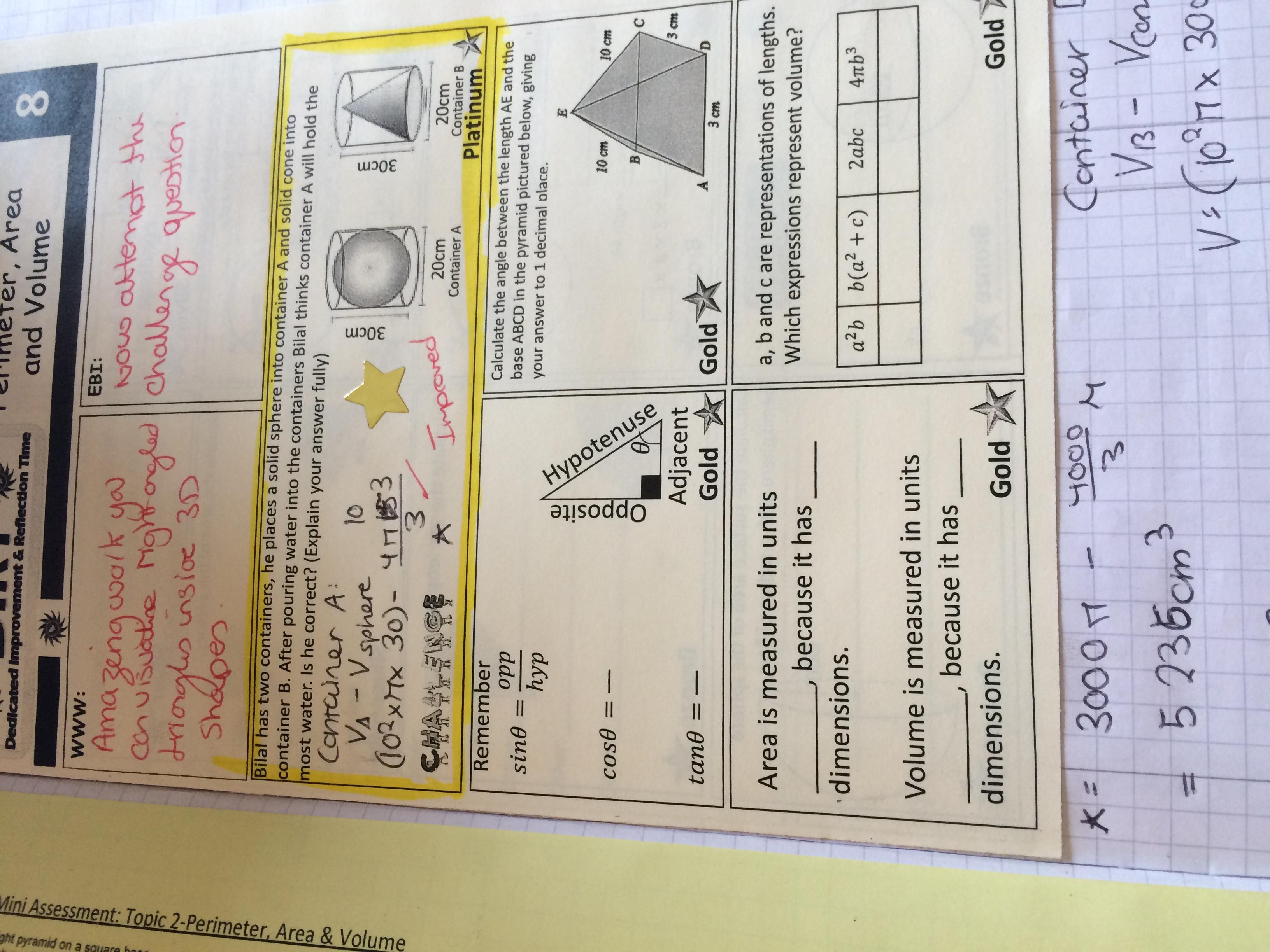 |  |
To get these booklets looking like you see above it was again a journey. Workload is extremely important to me in making it manageable for staff but also have a high level of impact on the students and below shows how this process has evolved over time, with me creating what you you see today. From pink box challenges to support and independent tasks. It is a continual process of refinement and improvement.
Consistency though is at the heart of this, I was tasked by @TeamTait when I joined Acklam in my new position of making marking and feedback consistent and of a high standard across the full department. I now feel confident I could pick up 99% of books across the full department and see a consistency and a high level of feedback. For the minority 1% it's often the student who seemingly manages to avoid all feedback and marking. We are looking at means of dealing with these consistent repeat offenders. As a way to help students know when they have a DIRT task I advise using post it notes.
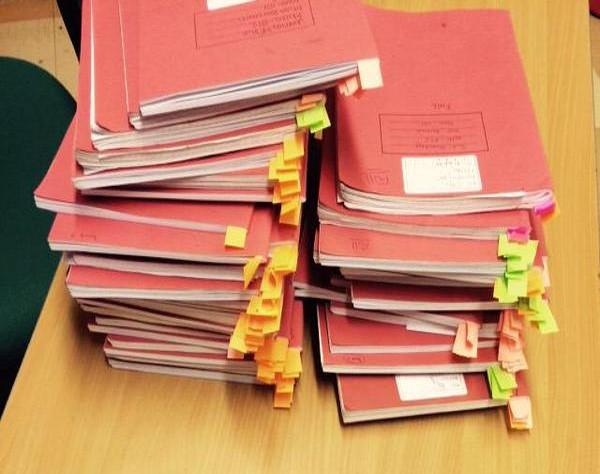 Place an index post it note at the top to indicate a task for a student, then when completed the student places it at the side so you know you have something to do. This means if you only have chance to mark half a set of books or a student has missed an assessment it is clear which books you need to mark first.
Place an index post it note at the top to indicate a task for a student, then when completed the student places it at the side so you know you have something to do. This means if you only have chance to mark half a set of books or a student has missed an assessment it is clear which books you need to mark first.
The amazing thing about this process is the students have really taken ownership of their books, to the extent in which some have even started to index topics, use page numbers and create a contents. As can be seen in the images below of two seperate students books. The students are taking pride in their maths work and hold it in high regard and as teacher it is my dream to see how this continually evolving journey has turned out so far.


Also a similar process happens after a larger termly exam, or practice paper.
This whole journey feeds into a much larger picture of intervention, revision, homeworks and so forth. However I hope you get a feel for the journey I have taken so far and am still on and I hope you are able to contribute to the DIRT Bank. I've been privilege to help and support teachers and students not just within my own school and I'm a great believer in people coming together and sharing good resources for free because education should be free. Please help me to keep the momentum going and support your fellow colleagues across the world.
Miss B
Tags: Feedback, Marking , DIRT, Maths Resources, Workload, Dirt Bank
Comments (2)
-
Guest - Margaret Baxter
Hi
I am enjoying your website enormously and appreciate all the hard work you have done. Your management of the marking workload is inspired!
Kind regards,
Margaret0 Like -
Guest - Dorry
Good work e DIRT Bank. I've been privilege to help and support teachers and students not just within my own school and I'm a great believer in people coming together and sharing good resources for free because education should be free. Please help me to keep the momentum going and support your fellow colleagues across the world.
0 Like
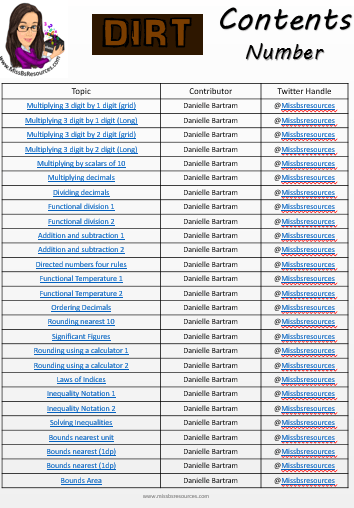
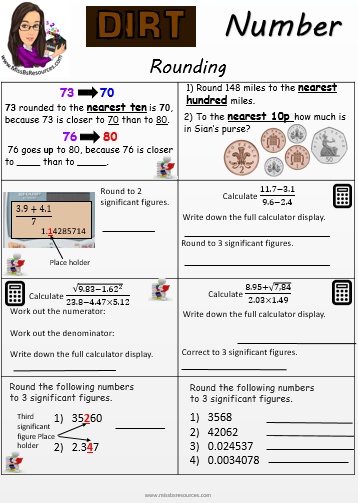
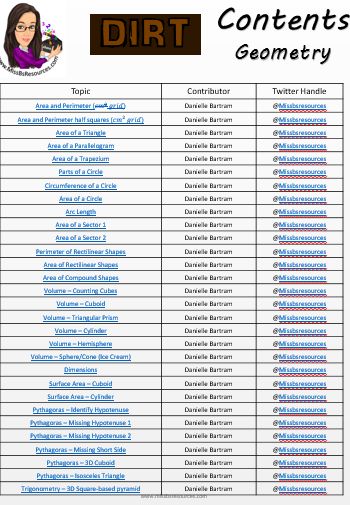
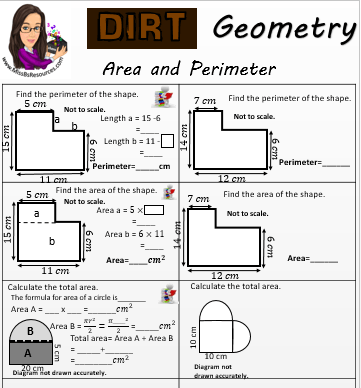
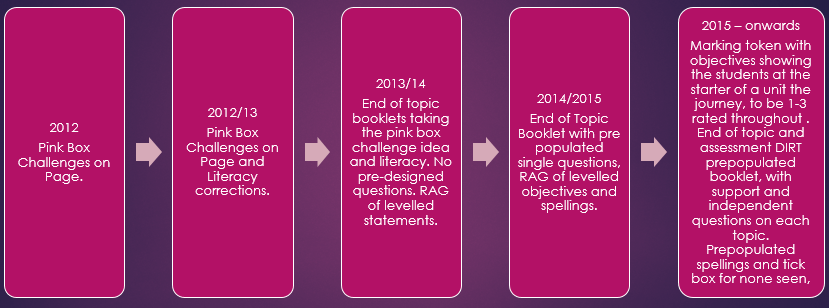
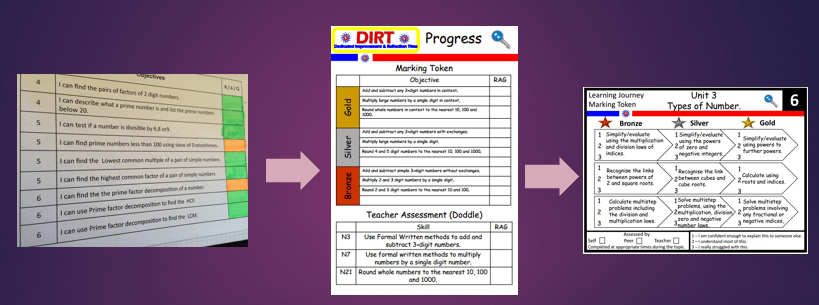
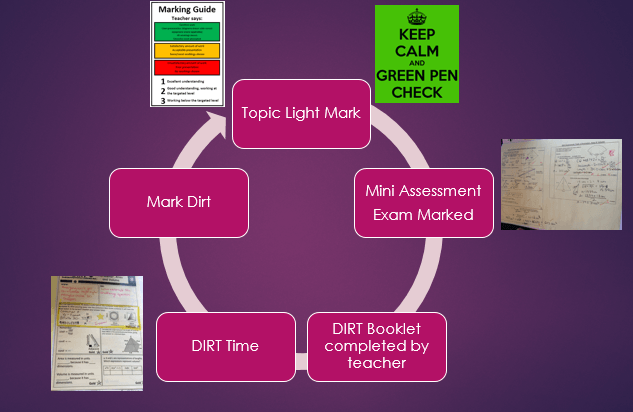
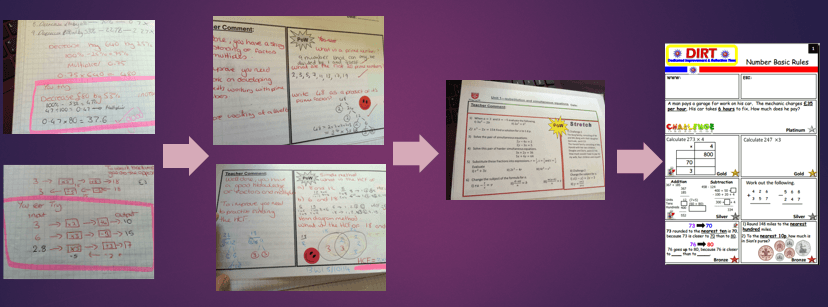
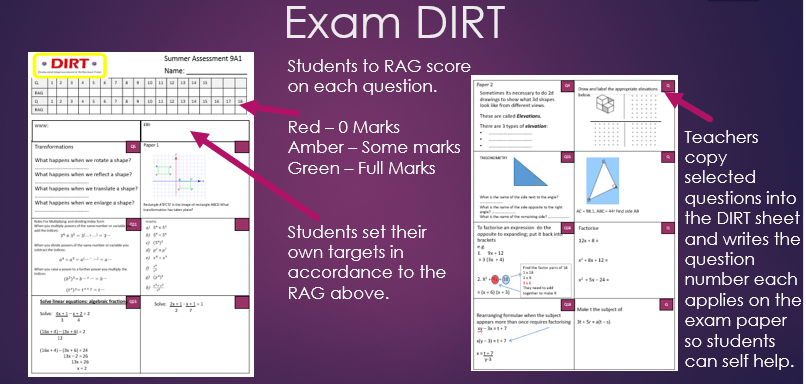





Leave your comments
Login to post a comment
Post comment as a guest